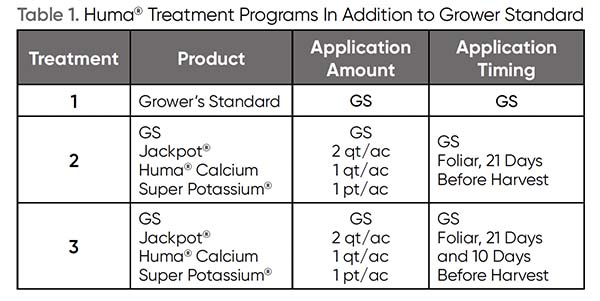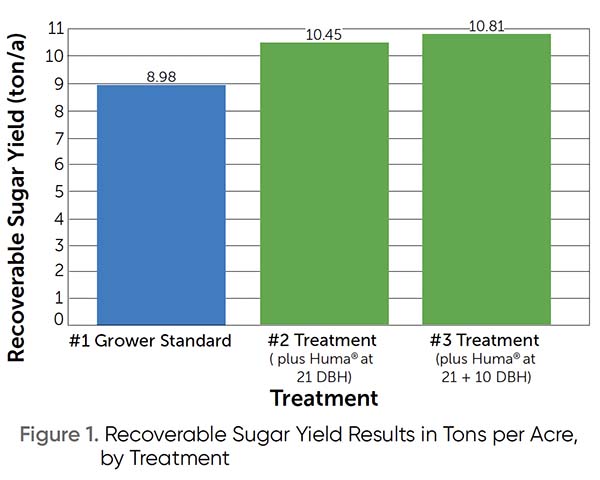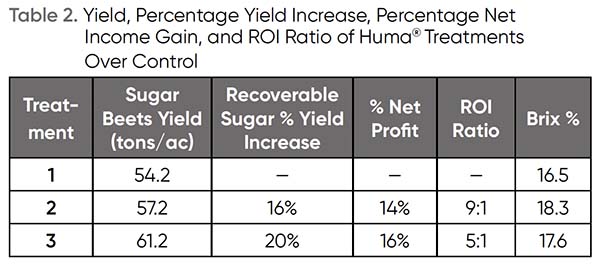Objective
This field trial was conducted to observe effectiveness of additional preharvest applications of Huma® products on recoverable sugar of sugar beets and return on investment.
Materials & Methods
This trial on sugar beet (Beta vulgais vulg. altissima) was conducted in Homedale, Idaho. The crop was seeded on May 8 and was harvested on October 13. The plots were established in a randomized design with three 25 ft x 34-inch center rows with 4 replications. The beet population was 2-3 plants per foot.
A basic grower’s standard (GS) fertilizer program was applied to all plots. The additional Huma® preharvest treatments were foliarly applied in September, 21 days before harvest (DBH) for Treatment 2 and Treatment 3, and on October, 10 DBH repeated for Treatment 3.
Three treatment programs were implemented as shown in Table 1.

Sugar Beets Year 1 Table 1
The sugar beets were harvested with a small digger, picked up and hand-weighed from 24 feet of row. Sugar content was taken by cutting out small chunks of several sugar beets, freezing them, then squeezing the juice from them. The Brix of juice was measured with a refractometer. The amount of recoverable sugar produced per acre was calculated from Brix percentage. Yield was recorded in tons of beets per acre and percentage of sugar.
Results
Figure 1 illustrates that the additional preharvest Huma® treatments yielded higher recoverable sugar (10.45 tons/a for Treatment 2, 10.81 tons/a for Treatment 3) than the grower’s standard program of 8.98 tons/a.

Sugar Beets Year 1 Figure 1
The one application of Treatment 2, which had a smaller yield increase than the 2 applications of Treatment 3, resulted in a larger return on investment (ROI) than Treatment 3 (Table 2).

Sugar Beets Year 1 Table 2
Conclusions
Even though the recoverable sugar yield differences among the three treatments were not statistically significant, the Huma® preharvest treatments yielded 16% to 20% higher recoverable sugar than the grower’s standard program.
The single application returned $9 for every $1 spent for Treatment 2 and return of $5 for every $1 spent for Treatment 3. Under both scenarios, the net income gain was > $100/acre. Such ROIs can be a noticeable incentive for producers to adopt Huma® products into their programs.

